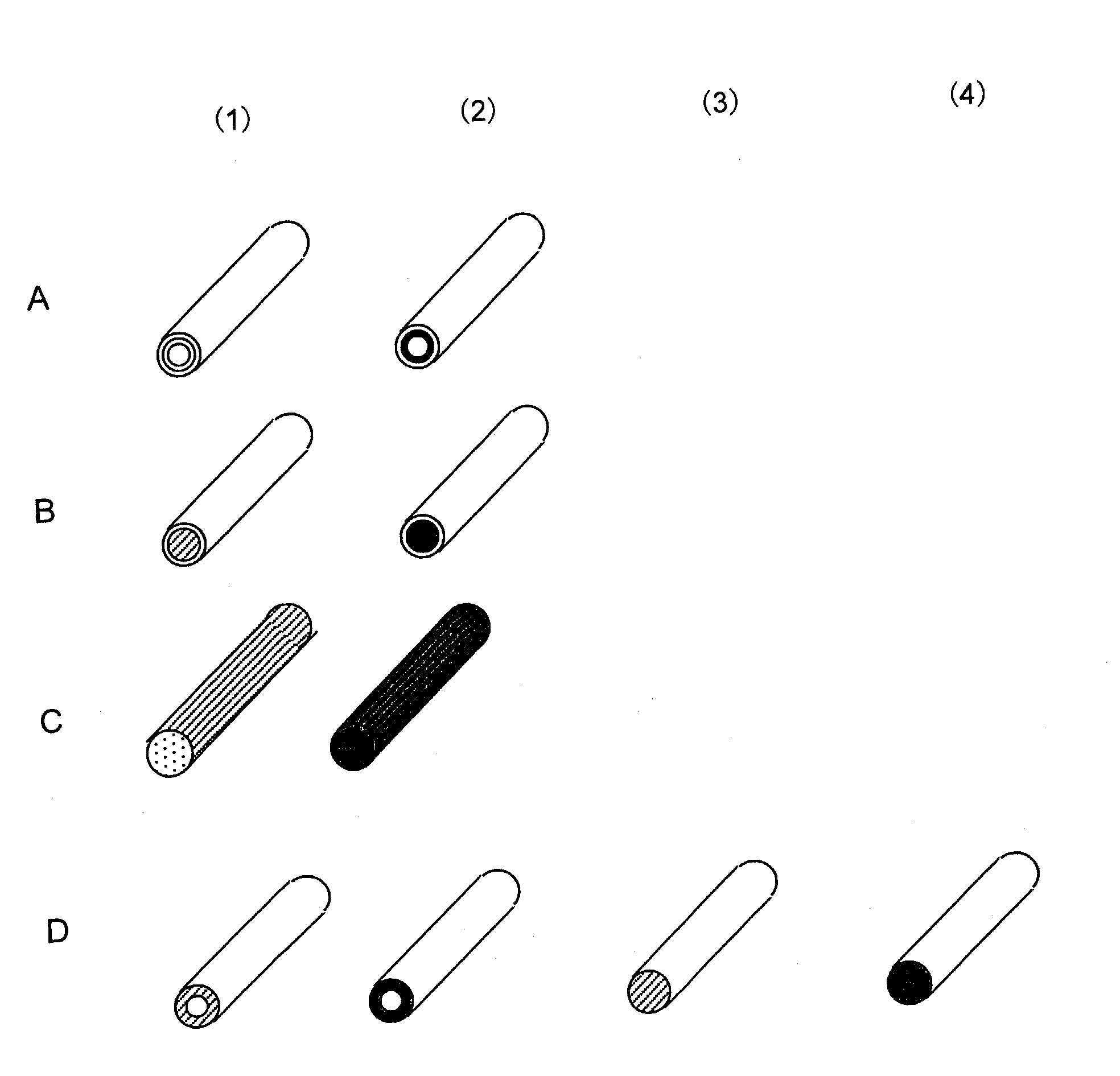Carriers having biological substance
- Summary
- Abstract
- Description
- Claims
- Application Information
AI Technical Summary
Benefits of technology
Problems solved by technology
Method used
Image
Examples
example 1
Preparation of Nucleic Acid-Immobilized Hollow Fiber (1)
[0232]The oligonucleotides (probes A and B) having amino groups prepared in Reference 3 were each immobilized to the inside of the nylon hollow fiber pretreated in References 1 and 2.
[0233]A solution prepared by adding oligonucleotides having amino groups prepared in Reference 3 (0.1 to 30 mM) to 10 mM potassium phosphate buffer (pH 8) was injected into the nylon hollow fiber pretreated in References 1 and 2. After overnight reaction at 20° C., the hollow fiber was washed with 10 mM potassium phosphate buffer (pH 8), 1M potassium phosphate solution (pH 8), 1M KCl solution, and water, thereby obtaining a nucleic acid-immobilized hollow fiber in which oligonucleotides were immobilized on the inner wall of the hollow fiber (FIG. 1 A). FIG. 1A shows (1) probe A-immobilized hollow fiber and (2) probe B-immobilized hollow fiber. In FIG. 2, probe A-immobilized bundles of fiber are shown with white circles (◯); probe B-immobilized bund...
example 2
Preparation of Nucleic Acid-Immobilized Hollow Fiber (2)
[0234]The oligonucleotides (probes A and B) having amino groups prepared in Reference 3 were each immobilized by the following method to the inside of the nylon hollow fiber pretreated in References 1 and 2.
[0235]A solution (2500 μl) of the oligonucleotide having amino groups prepared in Reference 3 (nucleic acid concentration: 10 μg / ml, phosphate buffer-normal saline solution containing 0.1M MgCl2 was used as a solvent) and 0.06 g of 1-ethyl-3-(3-dimethylaminopropyl)-carbodiimide (EDC) were nixed. Then the mixture was injected into the nylon hollow fiber pretreated in References 1 and 2. Then, the hollow fiber was washed with 1 / 15 mol / l phosphate buffer (pH 8.0), immersed in 5 ml of the same buffer, and then to which 0.12 g of EDC was added, followed by shaking at room temperature for 3 hours. Next the hollow fiber was further washed with 1 / 15 mol / l phosphate buffer (pH 8.0). Hence, nucleic acid-immobilized hollow fiber was ob...
example 3
Preparation of a Nucleic Acid-Immobilized Fiber Alignment
[0236]Twenty probe-A immobilized nylon fibers (pretreated in Reference 1, 20 cm long) obtained in Example 1 were aligned on a Teflon plate, close to but without overlapping with one another, and then fixed at both ends. To this plate was applied, a thin coat of a polyurethane resin adhesive (manufactured by Nippon Polyurethane Industry Co., Ltd, coronate 4403, nippolan 4223). After the polyurethane resin had sufficiently solidified, the fibers were removed from the Teflon plate, so as to obtain a sheet like product on which probe A-immobilized fibers were arranged in line. In the same manner, a sheet like product was also obtained for probe B-immobilized fibers. Then, twenty sheet-shaped products were laminated so as to form sequences as shown in FIG. 2, and then adhered using the above adhesive. Thus, a nucleic acid-immobilized fiber alignment was obtained, which contained a total of 400 fibers (20 fibers long and 20 fibers w...
PUM
| Property | Measurement | Unit |
|---|---|---|
| Thickness | aaaaa | aaaaa |
| Fraction | aaaaa | aaaaa |
| Fraction | aaaaa | aaaaa |
Abstract
Description
Claims
Application Information
 Login to View More
Login to View More - R&D
- Intellectual Property
- Life Sciences
- Materials
- Tech Scout
- Unparalleled Data Quality
- Higher Quality Content
- 60% Fewer Hallucinations
Browse by: Latest US Patents, China's latest patents, Technical Efficacy Thesaurus, Application Domain, Technology Topic, Popular Technical Reports.
© 2025 PatSnap. All rights reserved.Legal|Privacy policy|Modern Slavery Act Transparency Statement|Sitemap|About US| Contact US: help@patsnap.com



